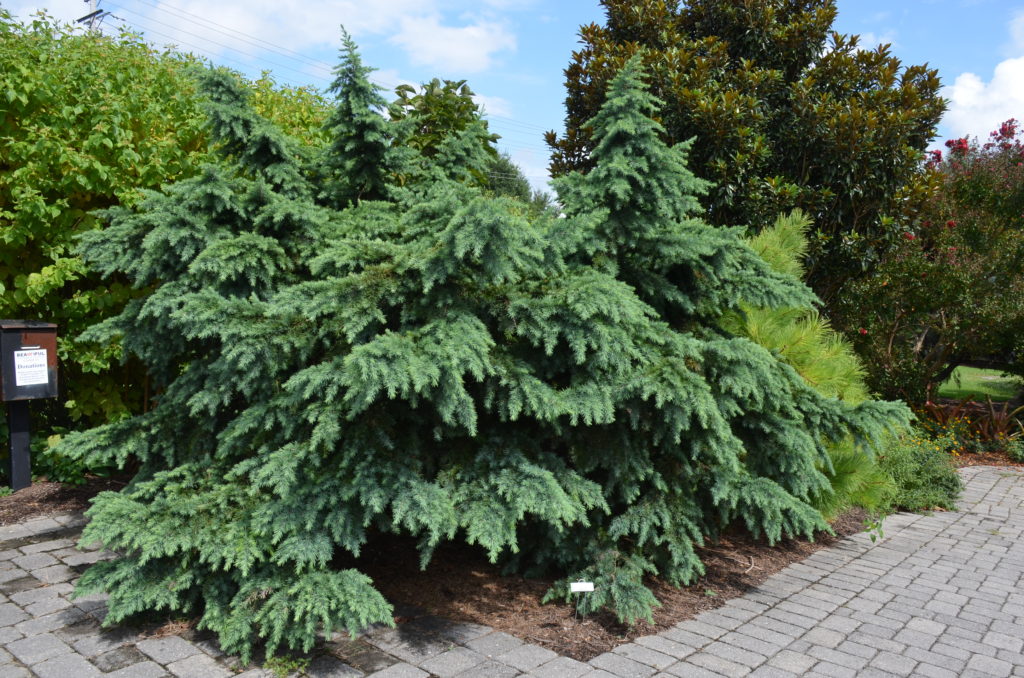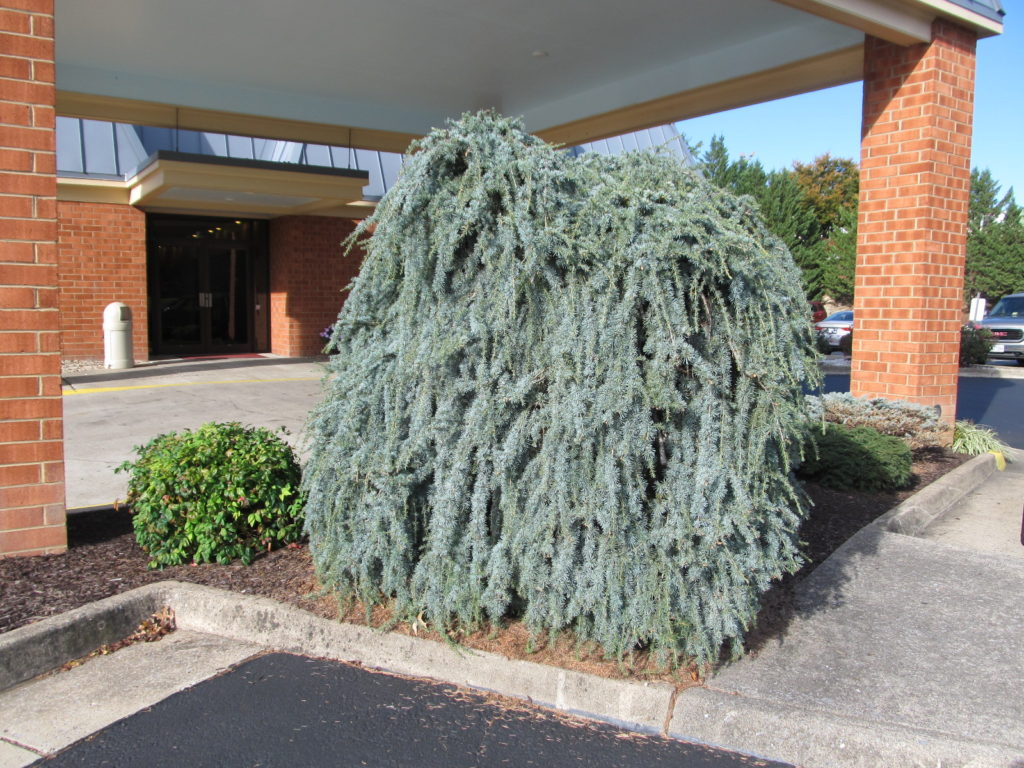Arizona cypress (Cupressus arizonica var. glabra) is a southwestern U.S. conifer tree that is often underplanted. Soil drainage is an absolute must! Growth rate is moderate (15 feet high after 10 years) and eventually will reach 30-50 feet at maturity. (zones 7-9). I have seen multi-year specimens thriving in zone 6b.

Deodar cedar (Cedrus deodara) is a medium-growing tree that typically grows to 40-50 feet high within its first 25 years. Shrub forms are also available. In its native Central Asia habitat, these cedars reportedly grow much taller. Young deodars start out pyramidal, maturing to flat-topped trees with broad-spreading horizontal branching. Deodar cedars prefer locations that are warm and humid in summers and protected from harsh drying winter winds (zones 6b -8).
Atlas cedar (C. atlantica) grow exceptionally well in the Southeast. Blue needle forms (var. ‘Glauca’) are most popular. Give trees lots of room as young cedars start out pyramidal, but develop wide-spreading horizontal branches as the age (zones 6-9).

Few pines (Pinus spp.) perform well in the southern U.S. Notable exceptions are loblolly pine (P. taeda), longleaf pine (P. palustris), and Eastern white pine (P. strobus) (Zones 3-8). Site selection and spacing are of key importance. Pines are susceptible to numerous pests including bark beetles, shoot borers, Zimmerman moth larvae, pine sawfly, scale, among others.
Two deciduous conifers thrive in the Southeastern U.S. Bald cypress (Taxodium distchum) is native to the swamps of Georgia and South Carolina (USDA hardiness zones 4-9), yet is hardy from Florida north to central Michigan. Dawn redwood (Metasequoia glyptostroboides), native to China, also performs equally well (USDA hardiness zones 4-8). Both mature into large 60-80 foot landscape trees, but several dwarf tree and shrub forms are available.
Japanese cedar (Cryptomeria japonica) excels in the southeastern U.S. with few disease or insect problems are available (USDA hardiness zones 5-9). Tree cultivars grow 40-50 feet tall; dwarf tree and shrub forms are also available.
Additional conifers that have been proven reliable include false cypress (Chamaecyparis pisifera), hinoki cypress (Chamaecyparis obtusa), Alaskan cedar (Xanthocyparis nootkatensis), Korean fir (Abies koreana), Western arborvitae (Thuja plicata), Golden larch (Pseudolarix amabilis), and China fir (Cunninghamia lanceolata).

 Posted in
Posted in 
